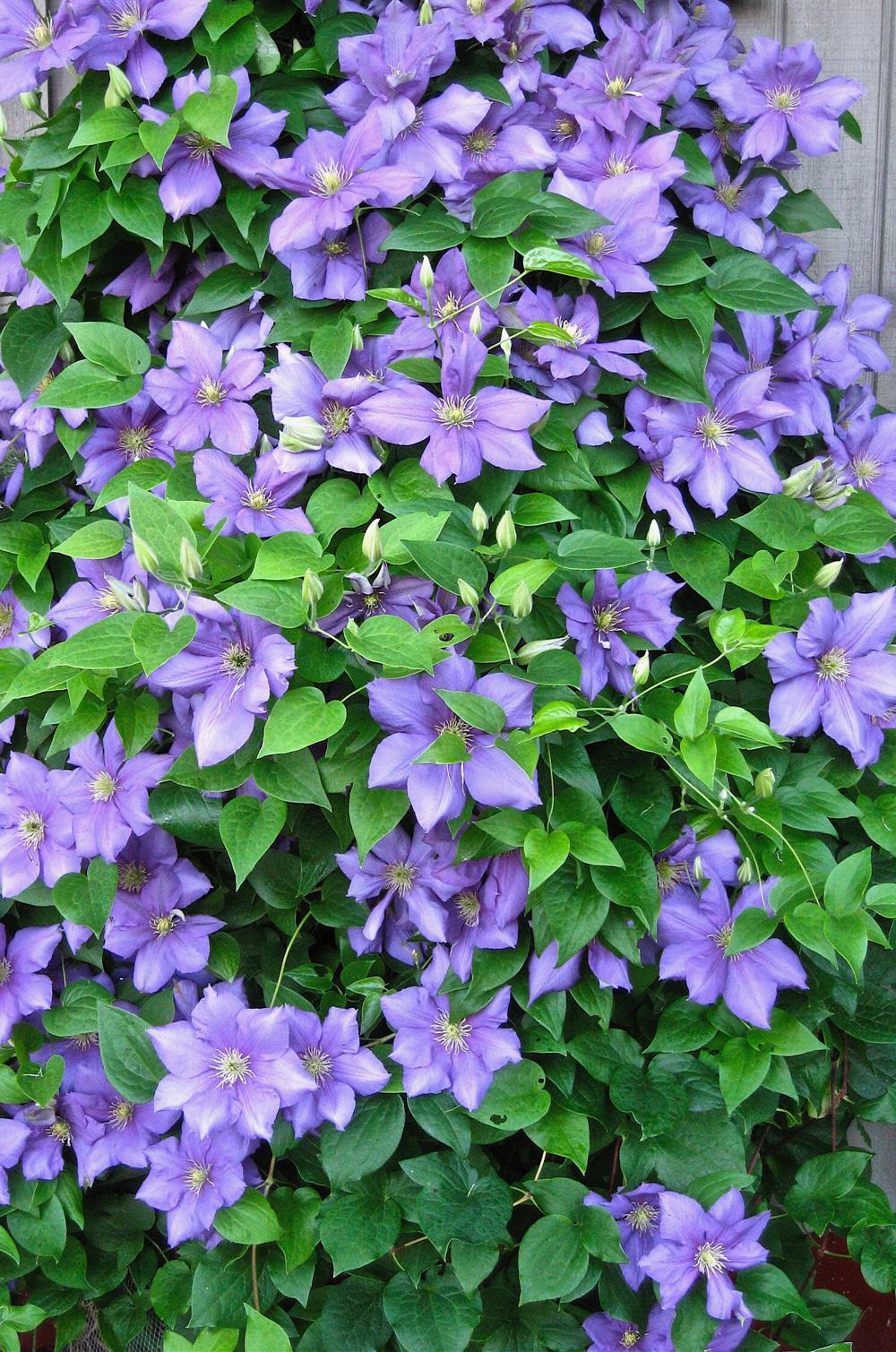Your Guide to Planning, Planting, and Growing Clematis
Clematis is known as the queen of climbers. This carefree perennial has vining stems that will happily scramble up trellises, over arbors and through other plants to create a tapestry of summer color. The star-like flowers bloom in colors of white, pink, red, blue or purple. It's easy to fall in love with clematis, and fun to find new ways to use them in your gardens and landscape.

Start with a Better Plant
When you compare two clematis plants side by side, it’s easy to see differences in quality. Longfield Gardens supplies grade #1 plants (shown on the far left) that have strong, well developed root systems. The bigger the plant, the faster it will settle into your garden and the sooner you'll be enjoying flowers.
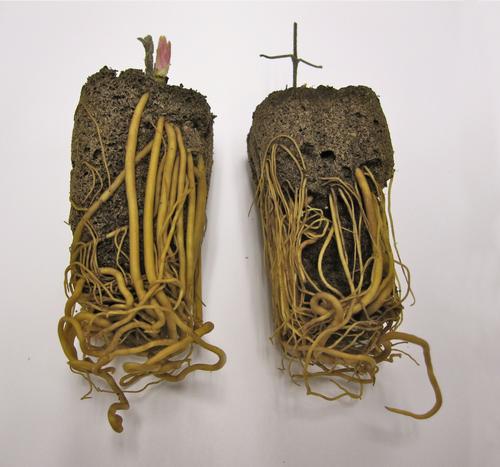
Plan for Success
Shade and Sun: Clematis will grow in partial shade, but flower best in full sun. Ideally, the top of the plant should be in sun and the root zone should be shaded by other plants.
Zone: Most clematis will thrive in hardiness zones 4-9. Not sure about your hardiness zone? Check the USDA zone map here.
When to Plant: Plant bareroot clematis in early spring while the plants are still dormant. Potted plants may be added at any time during the growing season.
Clematis are long-lived and don’t like to be moved, so try to choose a permanent location. Plan ahead for how you will support the vine. Though clematis can be allowed to scramble through shrubs or along a stone wall, they perform best when trained up a trellis, tuteur, arbor or other structure.
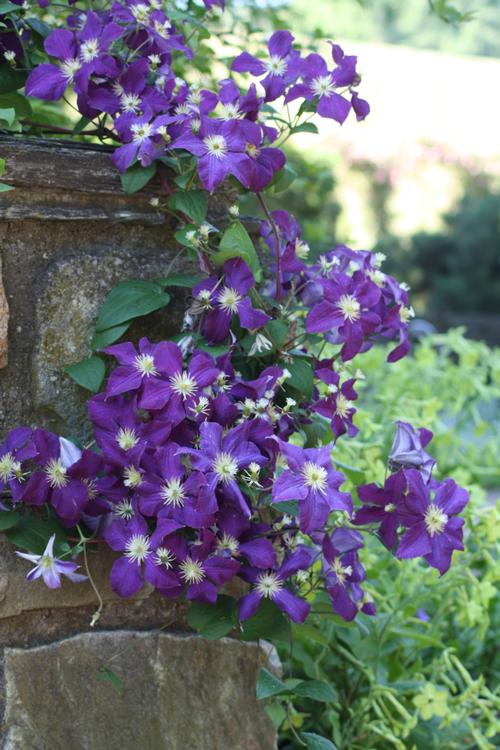
How to Plant Clematis
Once you have selecting a planting location, loosen the soil to a depth of at least 12". Incorporate about 6 cups of compost and ¼ to ½ cup of all-purpose granular fertilizer (follow package directions).
Dig a hole that is deeper than the root ball, and then position the crown of the plant (where the roots meet the stem) about 2" below the soil line.
Refill the hole and water well.
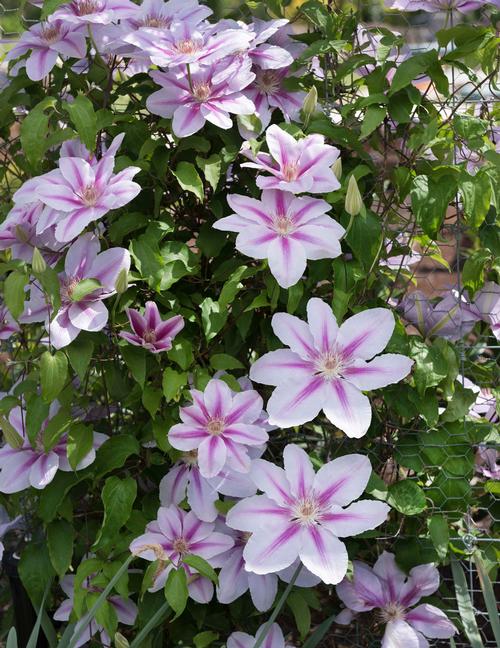
What to Expect
A newly planted clematis needs some time to settle in. It may take two or three growing seasons for the plant to reach full blooming size.
During the first growing season, your new clematis should be watered whenever the weather is dry. Mulching around the base of the plant will help retain moisture and keep the roots cool. Sometimes clematis need some help holding onto a trellis or structure. You can use soft twine, waxed string or even zip-ties to attach the vines and provide that extra support.
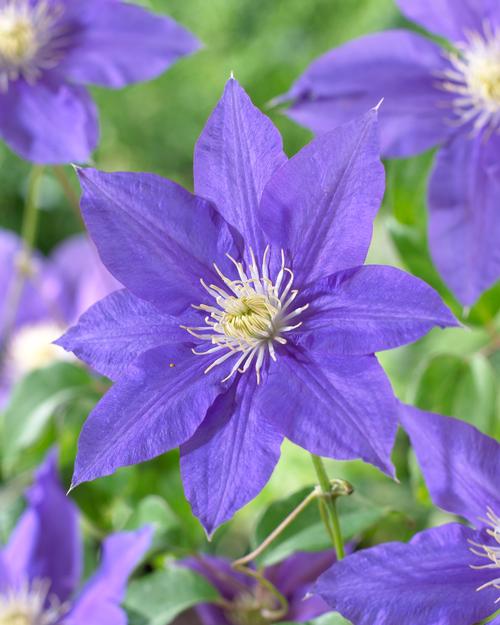
Where to Plant Clematis
While there are a few varieties of clematis that flower in late spring, most of them bloom during early summer. Some will re-bloom in late summer and at least one type only blooms in the fall. Growing different varieties of clematis next to each other will give you a long season of bloom.
Since clematis vines grow up and not out, it's easy to find room for them, even in a small garden. Heights vary depending on the variety, but most need something sturdy to climb on or over. This can be a wooden or metal trellis, a garden structure, a tree, a fence, or a simple support made of twisted or welded wire.
Though some clematis are ramblers and less inclined to climb, most have twining leaf stems that they use to attach themselves to trellises or other plants. These leaf stems are relatively short, so a good clematis trellis will offer gripping options that are no more than about 1/4" thick.
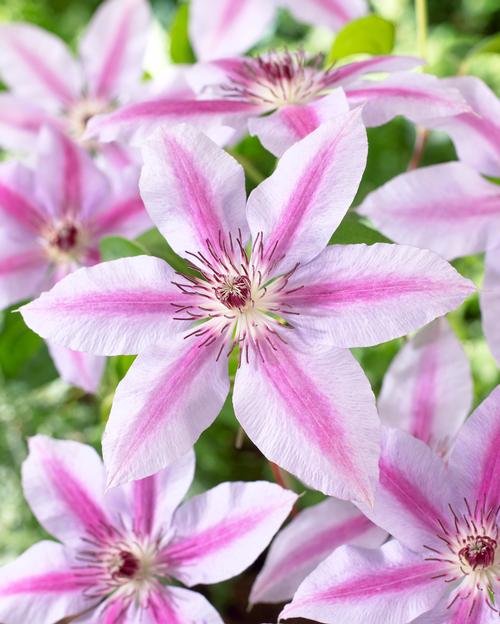
Here are some popular ways to use clematis around your home and garden. Before selecting a new plant, make sure to check the vine's mature size. Heights vary from 3-feet to 20-feet or more.
Entryways: Planting clematis near an entryway to your home or garden will greet guests with a beautiful display of color.
Arbors: Plant a clematis where it can scramble up an arbor, pergola or gazebo to create a romantic retreat.
Bare Walls: Mount a trellis against your house or garage and plant clematis to add texture and a splash of summer color.
Perennial Gardens: Add vertical interest to a perennial garden by planting clematis on a freestanding trellis or tuteur.
Fence Lines: Train clematis along the top of a fence or wall to soften hard edges.
Cutting Gardens: Florists have discovered that clematis make good cut flowers. A length of clematis vine, combined with other garden flowers and foliage, can turn an ordinary summer bouquet into something spectacular. Varieties that are especially good for cutting include Blue Light, Ramona, Niobe and Multi-Blue.
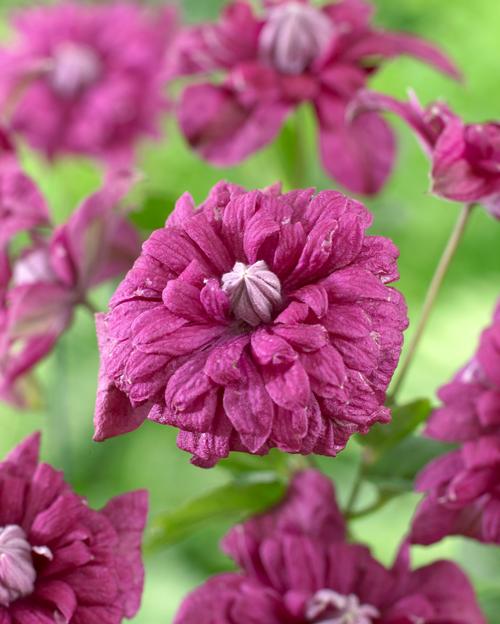
How to Care for Clematis
After the flowers fade, some clematis will develop decorative seed heads. These may be left in place or can be cut off to keep the plant looking neat. If you think your clematis may be a re-bloomer, remove only the spent flower heads and avoid cutting back the foliage.
Early spring is the best time to prune a clematis. There are two approaches to pruning. Some varieties produce new growth on last year’s vines. These should be pruned only enough to shape the overall plant. Other varieties die back to the ground during winter, and all new growth comes from the base of the plant. With this second type of clematis, simply cut off all of the prior year's vines in early spring. If you are unsure which type of clematis you have, wait until the plant sprouts new growth and note where it is coming from. Then you can prune accordingly.
Fertilize clematis in the spring when the first leaves begin to unfurl. Follow package instructions, sprinkling approximately ¼ to ½ cup of all-purpose granular fertilizer around the base of the plant.
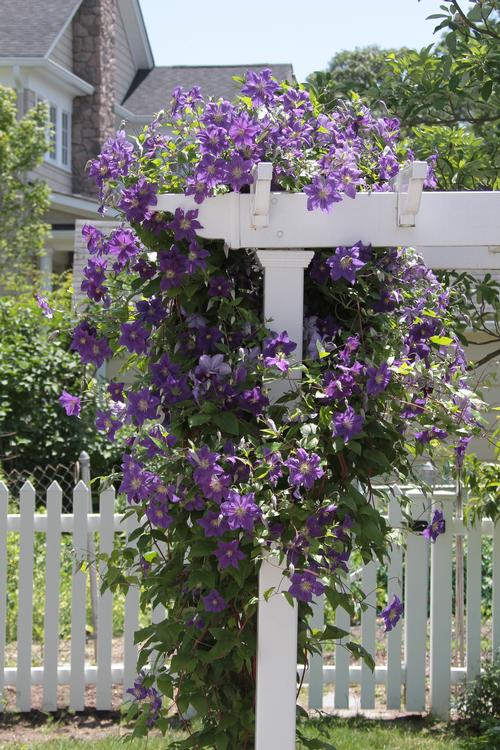
If your clematis outgrows its space or begins looking ragged, you can rejuvenate it by cutting back the entire plant to a height of 5". This can be done in fall or early spring. Stray vines may also be trimmed back any time during the growing season.
Clematis are susceptible to "wilt", which is a fungal disease that enters the plant at the soil line. It causes some or all of the plant's leaves and stems to suddenly turn black. Though the disease damages the plant for the current growing season, in most cases it will return the next year. Learn more in this article from the Missouri Botanical Garden: Clematis Wilt.
See our entire selection of clematis HERE.
To learn more about growing clematis, you may be interested in reading:
10 Easy Perennials for Sunny Gardens
